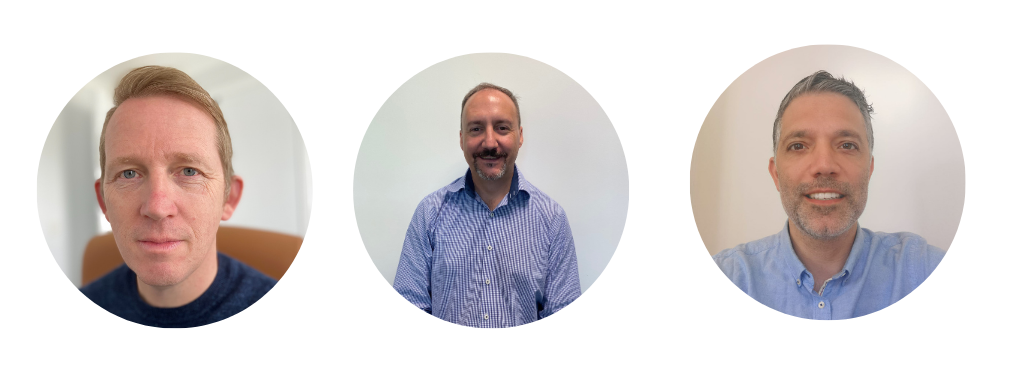Role
Industry
Solutions
Products

As Smartrak’s new CEO, Casey Molloy is bringing to the role a comprehensive understanding of how Smartrak can improve the way we support our customers. Casey was previously a Sales Manager at Smartrak, and after that, our COO. These two roles provided insights into critical areas where the relationship between Smartrak and our customers can be better aligned with the requirements of our customers.
By drawing on his experience, Casey identified three aspects to focus on:
To create an environment that would support these goals, Casey and the Senior Leadership Team looked for champions within our organisation that already had the knowledge to identify what needed to change and the experience to deliver it.
This has resulted in three senior personnel assuming new responsibilities with clear areas of focus.
Tim’s appointment to the role of Sales Manager across New Zealand and Australian operations will bring benefits to Smartrak’s existing customer base as well.
Tim was previously Sales Manager for Australia which included responsibilities for looking after Customer Success, although he freely admits that ‘selling’ and Customer Success generally require different approaches and that having a single manager for both wasn’t ideal. This has been addressed through Seb’s appointment to manage Customer Success on both sides of the Tasman but that doesn’t mean that Tim’s involvement with existing customers has ended.
Tim identifies where an existing customer is looking for a significant change in solution as a likely occasion for a sales professional to be involved. He says these events can represent a step-change in technology and that the attendant process often results in more elaborate sales processes which can swamp the Customer Success Manager (CSM)who is looking after that customer. Having the facility to bring in a sales professional provides valuable support for the CSM at this time and ensures they can continue to provide the required levels of service to their other accounts.
Eugene’s team is responsible for delivering the solution customers have bought. This includes the hardware, the software, and the training. This is a key part of the customer onboarding process and requires tight integration of the sales and enablement teams.
These are areas that have always been a focus for the dedicated team at Smartrak. However, previously, when existing customers made new purchases, they went through our customer service desk. This resulted in our highly skilled customer service team spending more time processing sales instead of focusing on providing excellent solution support to our valued clients.
To streamline the process, Eugene introduced a standard checklist. This helps us quickly handle straightforward sales, while ensuring that orders needing extra attention or project management are flagged for the appropriate team. Now, our customer service team can focus on giving our customers excellent support and innovative solutions.
The outcome of this process is that the Enablement team has more time to focus on customer matters that require a high degree of involvement.
When Smartrak talks about customer success we are referring to a customer’s ability to maximise the benefits of their technology investment. Alongside this, we want them to have access to enhanced solution capabilities as their requirements evolve. Ensuring our customers are fully utilising their Smartrak solutions and are aware of the ways they can build on that original investment are the goals of the Customer Success team.
Seb is the person charged with ensuring this happens. He previously managed Smartrak’s New Zealand sales team and in this role gained a comprehensive understanding of how our solutions can be matched to a customer’s specific operational environment.
He was also well versed on the technology maturity curve that many fleets demonstrate as they grow comfortable with an initial Smartrak solution and then progress to additional features. Examples of this progression could be to improve utilisation across the fleet, manage driver behaviours, or to bring in EVs.
Identifying the trigger points that generate these changes in customer requirements was a key element of Seb’s new role. As was an understanding of the processes involved in transitioning the customer’s existing operational structures to maximise any investment in additional technology.
With his experience, Seb was the ideal choice to manage customer success, but he also knew that others in the Customer Success team had knowledge to share. There are Customer Success Managers (CSMs) looking after Smartrak customers in a range of industries and across both our New Zealand and Australian operations. These CSMs have expertise of particular solutions and the operational environments their customers work in that needed to be shared. With Seb managing all CSMS, the expertise of individuals is no longer siloed. This is a knowledge base that’s available to benefit all our customers.
Another aspect that comes with collaboration across all members of the Customer Success team is the increased oversight of service delivery so best practice is a feature of all Customer Success touchpoints. Seb will be providing his team with expectations in service delivery and solution knowledge that ensure consistently high levels of service across the organisation.
This tighter integration of activities has also resulted in Customer Services being brought into alignment with Customer Success. Customer Services are the sole point of contact for customers that don’t have a CSM and being more closely involved with the Customer Success team ensures that any learnings are shared across both teams. For customers that do have a CSM, closer alignment of Success and Service ensures everyone is aware of any issues a customer has raised and are working together to deliver the result a customer wants. It is also expected that the alignment of these teams will provide multiple channels to better understand the customer.